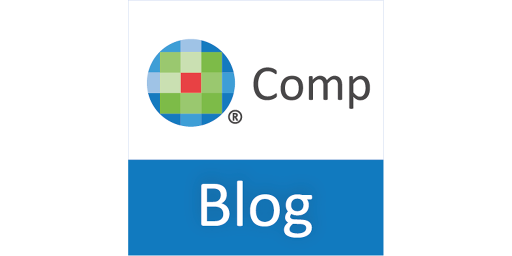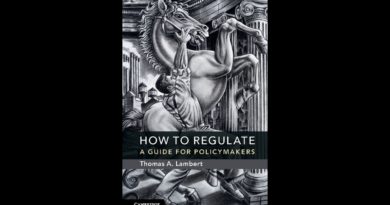The New Edition of Antitrust Compliance Toolkit of International Chamber of Commerce
Introduction
Companies are increasingly aware of the significance of complying with all applicable laws when carrying out their business activities. Companies (both large and small) have implemented compliance programs covering the most relevant legal areas to ensure they comply with these laws to avoid severe consequences such as high fines, or reputational damage. Worldwide, competition authorities advocate the implementation of effective compliance programmes with competition law. Adoption of effective compliance programmes can allow companies to benefit from certain benefits if they violate competition law. The importance of competition law compliance programs has been promoted not only by competition authorities but also by other institutions. In this regard, it is worth noting that the International Chamber of Commerce (
ICC
) have also promoted the benefits of implementing competition law compliance programmes for companies.This post seeks to examine the recent update of the ICC’s Antitrust Compliance Toolkit.
The ICC published in 2013 its First Antitrust Compliance Toolkit (
FACT
). The FACT provided 11 criteria for companies to consider when developing their compliance programmes. The FACT thoroughly explained how to develop and implement each of the criteria to build a robust compliance programme.In October 2024, the ICC published an updated version of the Antitrust Compliance Toolkit (Second Antitrust Compliance Toolkit (
)). The updated version reflects the changes in compliance with competition law over the past decade. It is significantly shorter than the previous version. It reduces the number of criteria that must be considered in order to adopt an effective compliance programme with competition law from 11 to 10. In particular, the SACT removes the criteria related to “Antitrust Compliance Certification” included in the FACT.
Moreover, the SACT simplifies the content of all the criteria, focusing on the most relevant points. The SACT does include an Annex that covers applicable standards and practical examples for a robust compliance programme. The SACT states that the best way to implement a successful compliance programme is to embed the compliance culture as part of company policy and culture.The SACT notes that “tone from top” is a vital factor in proving senior management’s involvement and commitment in doing the right thing. Senior management is not always enough to prove their support. They should also participate in training sessions to create a culture of awareness and empower employees to make ethical decisions.Likewise, the SACT mentions that recognising competition law as a risk on its daily operations is a good way for companies to prove their commitment to be compliant. Companies should also appoint an employee to be responsible for competition law compliance.
Furthermore, the SACT indicates that the issuance of a Code of Conduct is useful to provide a reference for all the employees of the company regarding their business activities. The SACT also advises companies to implement their compliance programmes for competition law as a whole. The organisation and resources for compliance programmes are likely to vary from company to company. However, the SACT specifically identifies three essential aspects that must be addressed: (a) compliance leadership and organisation; (b) regular reporting to the Board and the senior management and; (c) adequate resourcing.
Compliance leadership and organisation: Companies must appoint a person in charge of the implementation of an effective competition law compliance programme. This person must have direct access to the Board, as well as other relevant Committees within the company.
Regular reporting to the Board and the senior management: The Board and the senior management must be aware of the potential risks that the company faces. Reporting should be made on a regular basis, but its periodicity may change if new risks arise.
Adequate resourcing: The resources available to fund the implementation of competition law compliance programmes depend on the size of the companies and the risks which they may face. However, funding these programmes should be considered as an investment due to the severity of the consequences of breaching competition law, e.g., high fines, damages claims, reputational damages or even criminal liability depending on the jurisdiction.
Risk identification and assessment
The SACT notes that, to implement an effective compliance programme, companies should define their own risk assessment and methodology. This allows companies to identify and assess the risks which they may face in their daily business operations.
During the risk assessment process, the SACT suggests involving other employees from different areas, such as Finance and competition law lawyers, to better understand the approach to risk management of the company. Companies should assess their competition laws risks by taking into consideration different factors, such as the industry, the position of the company in the market, and the focus on certain practices by competition authorities. They should also consider the interactions with their competitors. These controls may differ in each company, but they should certainly include compliance handbooks, training sessions, business alerts, internal checks or registers.
The SACT points out that the implementation of effective internal controls helps to build a strong compliance culture within companies. This culture enables companies to mitigate their competition law risks and/or to hire and retain staff that want to work for ethical companies.
Antitrust compliance know-how
The SACT states that companies need to train all their employees in competition law to increase their awareness and minimise the risks of potential infringements.
The SACT points out that companies should draw up handbooks or guidelines by in-house or external lawyers that reflect the specific competition law risks that may face their business units. The SACT recommends that companies develop handbooks or guidelines by in-house or external lawyers that reflect the specific competition law risks that may face their business units. The training should focus on explaining the rationale behind the compliance policies and the potential consequences of violations. The SACT contains practical recommendations for the organisation of competition laws training sessions. The most important are: (a), the training and its frequency must be tailored to each business unit’s needs; (b), new hires must also receive competition-law training during their onboarding process; (c), training sessions can be held in person, online or virtually; (d), trainers must have expertise in competition law; and (e), senior management and team leads must attend competition-law training sessions in order to demonstrate the compliance culture of a company to the rest. Internal reporting systems can vary from company to company. The SACT indicates that there may be either an open-door approach or internal helpline systems to resolve questions that may arise in day-to-day business activities.
The SACT notes that the mere implementation of a whistleblower channel is not enough to be effective. The SACT also states that the reporting system should be anonymous and confidential to ensure its effectiveness. The whistleblower’s identity and the data he/she discloses should be kept confidential for as long as possible. Companies should use the best means to protect this information. The SACT emphasizes that companies must inform all employees about the existence and function of the reporting channel, so that they may ask questions or report misconduct. Companies should also broadly communicate that the information provided will be appropriately treated to keep it confidential and employees will not suffer any retaliation.
The SACT states that companies should respond promptly and fairly to any compliance concerns. Compliance programmes should at least make clear that: “a) Managers have an obligation to take seriously any compliance concerns…; b) The company will investigate any bona fide report or genuine concerns of rules being broken; c) Appropriate action will be taken to prevent similar incidents again; d) The investigation process will be full and fair for everyone involved; e) Action will not be taken against anyone before an accusation/concern has been appropriately investigated and; f) Non-retaliation and confidentiality will be guaranteed”.
Handling of internal investigations
Companies typically conduct internal investigations after receiving a complaint from potential misconduct.
The SACT highlights the relevance of implementing an efficient, trustworthy and well-funded process for investigating the allegation of misconduct and documenting the company’s response. The Chief Ethics and Compliance officer or a member from his/her team is usually responsible for the internal investigation. However, it is not uncommon to outsource this process for legal privilege or to prove impartiality. Internal investigations may be ad hoc screening using AI, in-depth legal assessments, internal compliance process audits and substantive forensic compliance investigations or due diligence investigations.
The SACT strongly suggests that companies should lay down a general guidance of internal investigations for potential breaches. Companies should also inform employees of the content. The guidance should cover rules on confidentiality, impartiality of investigators, timelines, scope of investigation and measures adopted to protect employees from retaliation.
In addition to that, the SACT notes that companies should elaborate specific guidance when conducting a competition law investigation, since it may lead to a leniency application. The guidance should include: (a) the members of the investigation team; (b) the roles of other internal units involved in the investigation such as IT, Audit, HR…; (c) confidentiality and legal privilege issues; (d) the relevance of preserving documents and electronic records; (e) how interviews and electronic searches will be conducted; (f) the scope of the investigation; (g) the use or not of AI during the investigation and; h) the individual’s right to separate lawyers and the company’s policy on paying legal fees.
Sometimes internal investigations run in parallel with leniency applications. For that reason, companies should avoid any leaks during their internal investigation to not harm their leniency applications and to not disrupt their business operations.
Disciplinary action
Competition authorities expect companies to react when becoming aware of any wrongdoing in their business activities.
The SACT underscores the relevance of including an internal disciplinary code which applies if any employee breaches competition law to build strong competition law compliance programmes. The disciplinary policy should be transparent and clear. Companies should consider the following factors to have a credible policy: (i), disciplinary actions must be applied fairly, regardless of the seniority or potential offenders, and (ii), employees must know the consequences of breaking competition law in advance. The severity of the offence should determine the disciplinary measures. The severity of the offence should be taken into consideration when determining the appropriate disciplinary measures. These can range from a simple warning to dismissal. Companies can avoid predetermined outcomes by applying aggravating and reducing factors. It allows companies to review the facts of a case in detail. Mitigating factors may include collaboration during the internal investigation or the employee’s attendance at non-mandatory competition law training, whereas aggravating factors may include repeat offender, or the lack of cooperation during the internal investigation.
Lastly, the SACT contains a specific section referring to competition law cases. Companies can apply for leniency and, therefore, must ensure that the employees involved in committing the infringement cooperate fully with the investigation conducted by competition authorities. In such situations, companies can establish a system of delayed sanctions to ensure that they are fully cooperating with the competition authority throughout the entire proceeding before resolving the internal one. In that regard, it should consider the specificities of the law applicable in each jurisdiction.
Antitrust due diligence
The SACT states that competition law due diligence may take different forms. Companies should avoid hiring employees who have violated competition law. Companies should avoid hiring employees who have breached competition law.
Secondly, the SACT notes that companies should conduct regular assessments to review their exposure to competition law risks and to identify new ones.
Thirdly, the SACT recommends auditing specific business units or practices to discover the existence of real or potential infringements of competition law.
Fourthly, the SACT identifies trade associations as a potential big risk for companies under competition law but also recognises that trade associations perform a pro-competitive and useful role in the economy. To reduce these risks, companies should properly train their employees prior to attending meetings within a trade association. Besides, companies should check that trade associations have adopted appropriate competition law compliance policies.
Fifthly, the SACT strongly suggests conducting a competition law due diligence within M&A context. This allows companies to detect any potential infringements which may impact the closing price of a transaction. It is also important for companies to identify these violations before closing the transaction to negotiate for the costs of the competition law compliance to be borne by the seller.
Compliance incentives
The SACT states that companies should offer incentives to their employees to bolster a culture of compliance. Incentives are difficult to implement in the real world, so it is best to wait until the compliance programme has been well-established before implementing them. There are also more tangible incentives, such as monetary rewards or promotion prospects. There may also be more tangible incentives such as monetary rewards or promotion prospects.
Monitoring and continuous improvement.
The SACT states that companies should regularly assess their competition law compliance programmes to ensure that they cover all the risks faced by companies.
The SACT indicates that companies should monitor and assess their processes and controls within their compliance programmes to check whether the measures adopted are appropriate and work effectively and efficiently.
The SACT also highlights the relevance of regularly conducting substantive assessments to determine whether companies comply with competition law. This assessment will demonstrate that companies are committed to complying with competition laws. This assessment allows companies to either prove that risks are the same and therefore no changes are needed, or identify new risks so that new controls need to be put in place.
Having reviewed the competition law compliance program, companies should develop an action plan for correcting and mitigating all the new risks identified. This action plan must include a delivery plan setting out the deadline and the person responsible for each action.
Conclusion
The SACT published by the ICC is an extremely helpful tool for companies and competition lawyers to get an in-depth overview of how to implement a competition compliance programme. The SACT compiles key developments in competition compliance in the last decade.
The SACT emphasizes that compliance with competition law cannot be dealt with in isolation. The SACT argues that compliance with competition law should be managed alongside other important areas of compliance, such as data protection and anti-bribery. The purpose of having a single programme that covers different areas is to enable companies to promote and develop a compliance culture. The “tone from top” means that senior management should actively participate in compliance activities so that employees know that compliance with competition law is a priority. As a result, the mere endorsement of compliance programmes by senior management is not enough to comply with this criterion.
The SACT highlights that companies should conduct risk assessments on a regular basis to ensure that their compliance programmes are updated to their real risk exposure, so they can either adopt new control measures, or amend the current ones in force to tackle the new challenges. When assessing risk, companies should consider, among other things, regulatory changes, market developments, or the company’s position in the industry. These training sessions must not be generic. The SACT states that companies should have a clear guide explaining how they plan to conduct internal investigations. The guidance should include, in particular, rules regarding confidentiality, timeliness, scope of investigation, or steps to protect employees against retaliation. The investigations enable companies to identify and correct any potential weak points. The existence of clear guidance can help when companies conduct internal investigations and apply for leniency at the same time since leakages can negatively affect the leniency application.
The SACT stresses that the internal disciplinary regime to be applied as a result of competition law infringements must be known in advance by all the employees. It must be transparent and clear. The disciplinary regime must be applied uniformly to all staff without giving senior employees preferential treatment. The disciplinary regime must be applied uniformly to all the staff without granting beneficial treatment to senior employees.
The SACT also underscores that companies should implement incentives, tangible and intangible, within their compliance programmes to support their compliance culture.
The SACT demonstrates that competition law compliance is an important matter for companies conducting due diligence in M&A transactions or internal transactions to detect potential infringements or risks. The SACT recommends that companies perform due diligence when hiring new employees in order to verify if they have violated competition laws. This shows that companies are serious about complying with competition law. The SACT is shorter and more concise compared to the FACT, and incorporates all of the changes in competition law compliance that have occurred over the past decade. The SACT also provides useful guidance for building a strong compliance programme. It offers flexible solutions for companies to implement compliance programmes with competition law tailored to their operational risks.






